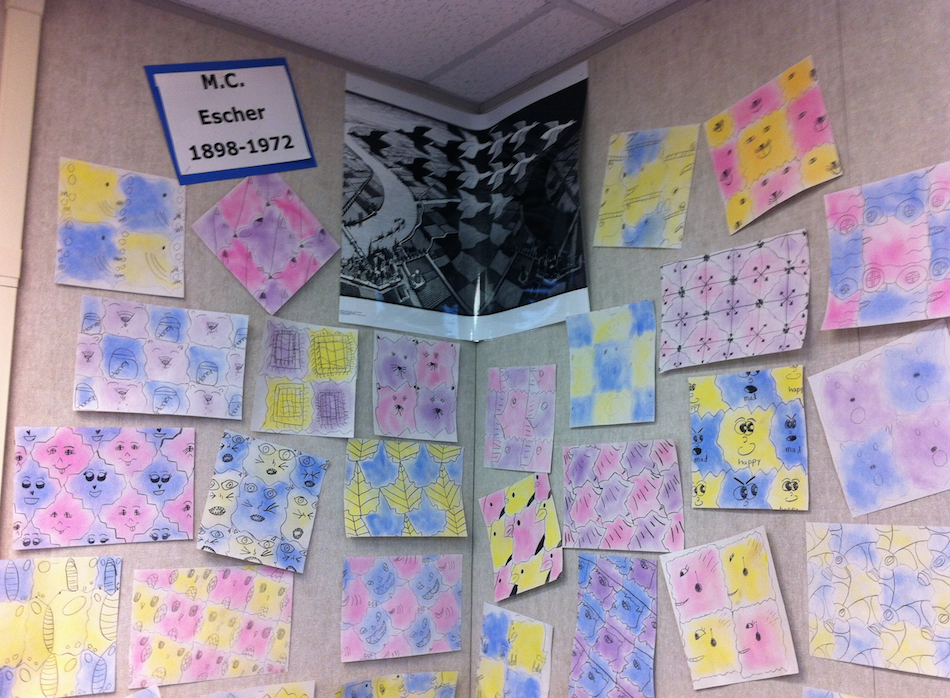
Education experts talk about the benefits of art education and how it increases students’ performance across disciplines, expanding language development, strengthening critical thinking skills and more. M. C. Escher provides a good example of how art education benefits students in other subjects.
Meet the Masters students learn how M. C. Escher created unique geometric compositions, called tessellations. His tessellations and optical illusions challenge their imaginations and reinforce a variety of mathematical concepts.
Step 1: Introducing the Master
Meet the Masters students learn that a tessellation is like a puzzle with pieces that are all the same. Escher saw rich possibilities in repeating patterns and developed a system to turn these patterns into beautiful works of art. With each photograph in the slide show, students are encouraged to have fun discovering the movement Escher created as he constructed impossible worlds.
Step 2: Learning From the Master
Back in the classroom, students enjoy hands-on practice with these amazing patterns. They receive worksheets with a variety of tessellations and apply different colors to different animal shapes so they can view the various elements more easily. The older students use their creativity to produce their own tessellations with several options of shapes. They follow instructions to add details which make their creations come to life.

Step 3: Working With the Master
Students begin by learning a special method for creating their own unique tessellation shape. After cutting their shapes out of tag board, students trace them onto art paper, making sure each shape fits into the next with no overlapping. When the paper is filled, they notice that some of the partial shapes around the edges add interest and movement to their drawing. They select two contrasting colors and, beginning in the center, apply dry paint powder with a cotton ball. As they use the second color, they are reminded how contrasting colors are far apart on the color wheel. Students are shown how to use their imaginations to add some simple details that make their creations come alive. Advanced level students are shown how to create what Escher called his “metamorphose” where the figures at one end “morph” into something else at the other end of the canvas. Every student’s tessellation is unique, just like M. C. Escher’s.
How does this art lesson help students with math?
Understanding patterns is a crucial building block in mathematical reasoning. Studies show that children’s understanding of patterns contributes to the development of counting, problem solving and understanding number combinations. Understanding patterns provides the basis for understanding algebra. The benefits of understanding patterns can be applied to many other subjects as well. For example, patterns form the basis of music. In science, understanding animal patterns can be used to help endangered species.
Meet the Masters does not simply provide art projects. Yes, students learn about art history, and they are introduced to new vocabulary in a meaningful way. But the broader lesson is that Meet the Masters provides an avenue to make cross connections with a variety of other subjects, like M. C. Escher and math.
Learn more about our M. C. Escher art project and examples from MTM students.
